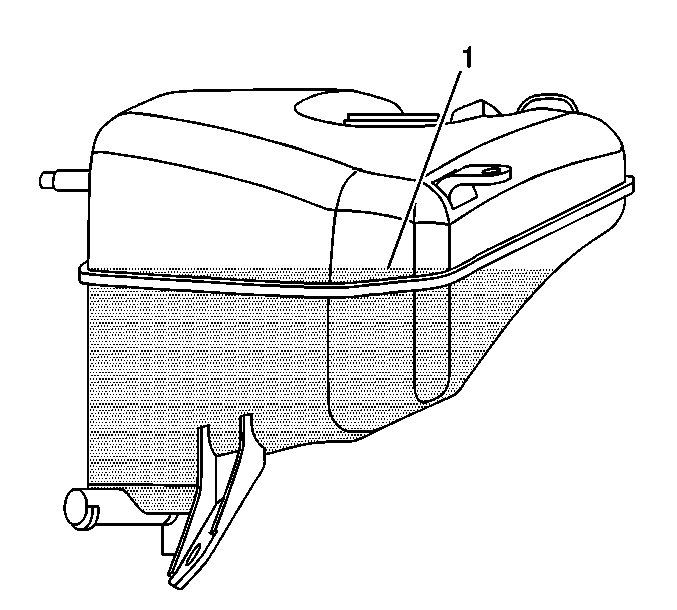Draining Procedure
Caution: As long as there is pressure in the cooling system, the temperature
can be considerably higher than the boiling temperature of the solution in
the radiator without causing the solution to boil. Removal of the pressure
cap while the engine is hot and pressure is high will cause the solution
to boil instantaneously -- possibly with explosive force -- spewing
the solution over the engine, fenders and the person removing the cap.
Caution: An electric fan under the hood can start up even when the engine is
not running and can injure you. Keep hands, clothing and tools away from any
underhood electric fan.

- Remove the surge tank
pressure cap.
| 1.3. | If necessary, replace the cap. |
| 1.4. | Clean the surge tank filler neck. Inspect the filler neck. |
- Remove the front air deflector. Refer to
Front Air Deflector Replacement
in Body Front End.
- Open the radiator drain at the bottom of the radiator.
- Completely drain the cooling system.
- If the coolant is dirty, or if there are deposits in the radiator,
flush the cooling system before refilling. Refer to
Flushing
.
- Remove the surge tank. Refer to
Radiator Surge Tank Replacement
.
| 6.1. | Clean the outside of the surge tank. |
| 6.3. | Thoroughly clean the inside of the surge tank using soap and water. |
| 6.4. | Thoroughly flush the surge tank with clean water and drain. |
- Install the surge tank. Refer to
Radiator Surge Tank Replacement
.
- Close the radiator drain.
- Install the front air deflector. Refer to
Front Air Deflector Replacement
in Body Front End.
Filling Procedure
Notice: Do not add cold water to the cooling system with the engine at or above
operating temperature. Adding cold water causes rapid cooling, resulting in
possible engine damage.
NOTICE: When adding coolant, it is important that you use GM Goodwrench DEX-COOL®
or HAVOLINE® DEX-COOL® coolant. If Coolant other than DEX-COOL®
or HAVOLINE® DEX-COOL® is added to the system the engine coolant will
require change sooner; at 50 000 km (30,000 mi)
or 24 months.
Notice: Do not use a solution stronger than 70 percent antifreeze. Pure antifreeze
can freeze at -22°C (-8°F).
Important: This engine is not equipped with block drains, 2.5 L (2 qt)
of residual coolant remains in the engine block.
- Refill the cooling system. In order to ensure sufficient engine cooling,
freezing and corrosion protection, maintain the protection level at -37°C (-34°F)
or lower.
- Start the engine.
- Place the heater and A/C control in any A/C mode except Max and
the temperature in the highest setting.
- Allow the engine to continue idling until the lower radiator to
water pump hose is hot.
- Turn OFF the engine.

- Allow the engine to cool
to outside temperature. Ensure the coolant level in the surge tank is at
the proper level (1).


